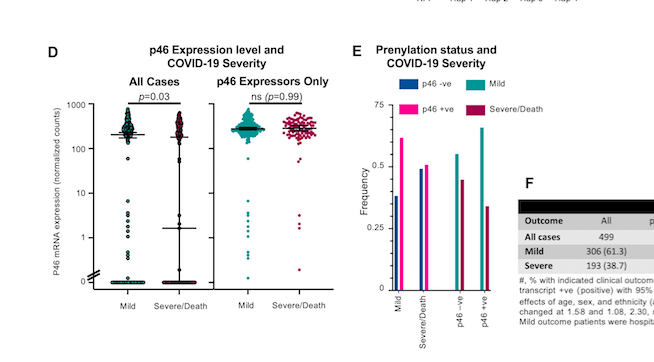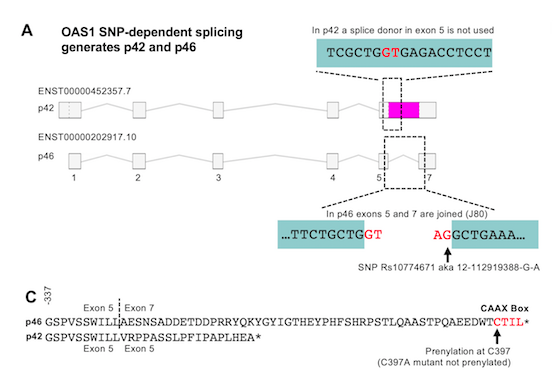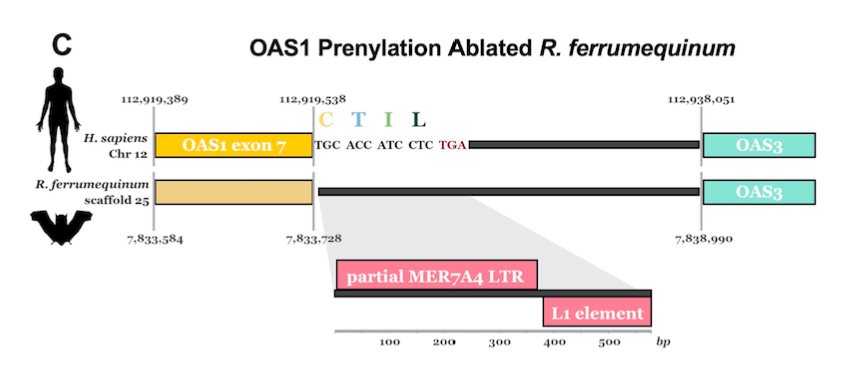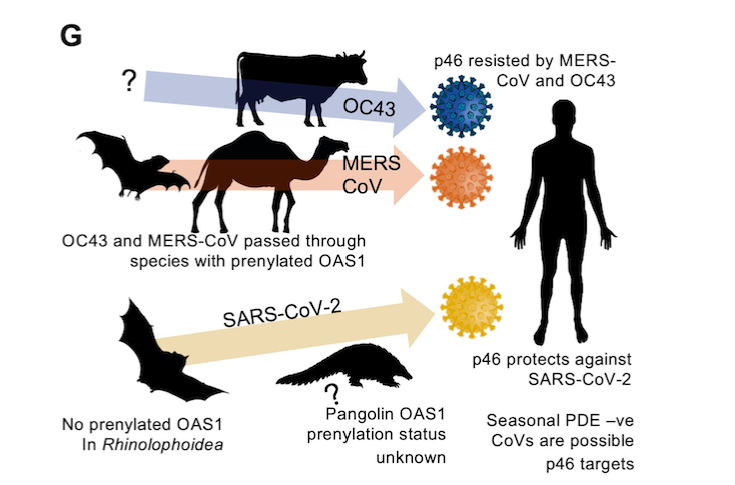New work from our @CVRinfo lab led by @virologist_atu revealing another innate immune & #39;defect& #39; in horseshoe bats and linking this to why some people get more severe COVID-19:
https://www.medrxiv.org/content/10.1101/2021.05.05.21256681v1
https://www.medrxiv.org/content/1... href="https://twtext.com//hashtag/CVRCovidResponse"> #CVRCovidResponse
https://www.medrxiv.org/content/10.1101/2021.05.05.21256681v1
We found that the prenylated form (p46) of the dsRNA sensor OAS1 is associated with protection from severe COVID-19.
This is because prenylated OAS1 is associated with endomembranes (SARS-CoV-2 replicates in replicative organelles) and prenylation of OAS1 is necessary for OAS1 to sense SARS-CoV-2.
Not everybody expresses prenylated OAS1 due to a SNP. This SNP predominates in most human populations (except in people of African descent).
Because prenylation was required for anti-SARS-CoV-2 activity, we looked at OAS1 in horseshoe bats. Remarkably, ~55 mya retrotransposition disrupted the prenylation signal in these bats (preventing this pathway from sensing viruses like SARS-CoV-2)!
Because most animals express prenylated OAS1, it is possible that the absence of this defence in billions of humans (and in horseshoe bats) makes humans more susceptible to spillover from these bats than other species?
Perhaps the predominance of prenylated OAS1 in Africa has reduced the burden of COVID-19 in Africa?
Prenylation of OAS1 is the mechanism behind the association of a SNP in OAS1 with protection against SARS-CoV-2/COVID-19:
https://www.nature.com/articles/s41586-020-03065-y)">https://www.nature.com/articles/...
https://www.nature.com/articles/s41586-020-03065-y)">https://www.nature.com/articles/...
And underlies the protection conferred by the & #39;Neanderthal OAS1 haplotype& #39;:
https://www.nature.com/articles/s41591-021-01281-1
https://www.nature.com/articles/... href=" https://www.pnas.org/content/118/9/e2026309118)">https://www.pnas.org/content/1...
https://www.nature.com/articles/s41591-021-01281-1
A big thanks to everyone involved. Particularly the patients who participated in the study through @CCPUKstudy.

 Read on Twitter
Read on Twitter





